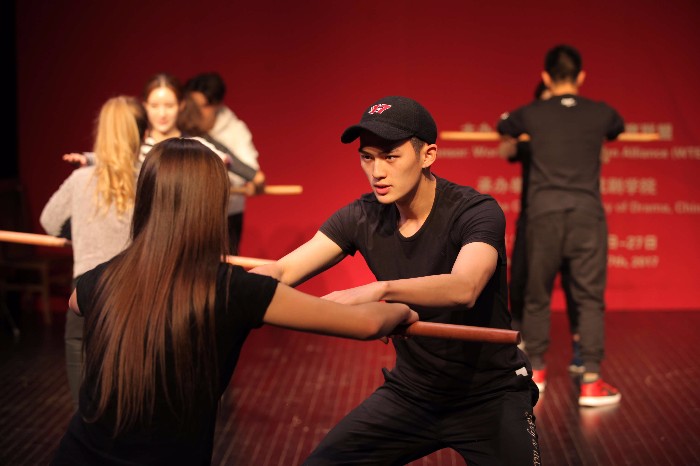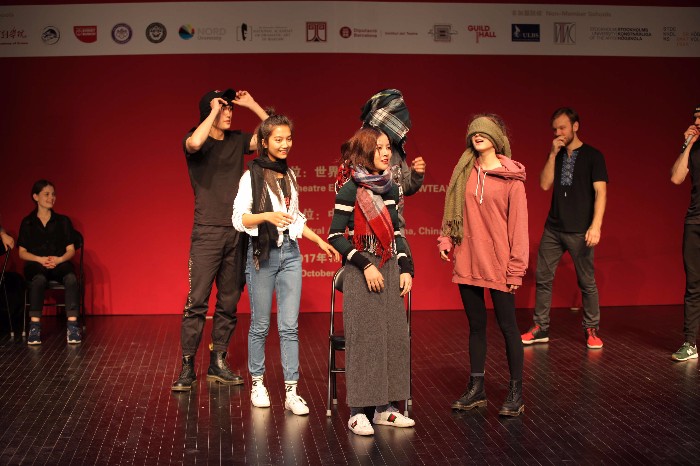Theatre Workshop Held By Kiev National I.K.Karpenko-Kary University of Theater, Cinema and Television, Ukraine
On the morning of October 25th, 2017, a theatre workshop was held by Kiev National I.K.Karpenko-Kary University of Theater, Cinema and Television (Ukraine) at the thrust stage in Changping Campus of the Central Academy of Drama. As the main speaker, Volodymyr Zakharchenko firstly introduced the central task of today’s workshop: to improve performer's sense of feeling, imagination and rhythm. Among the three elements, he attached great importance on performers’ sense of rhythm. The most intuitive feeling that the performance can bring to the audience is the sense of rhythm. However, the audience would only feel the rhythm sensation from actors’ bodies and their coordination if the supplementary elements are excluded asides, such as lighting and music. Therefore, the first activity of the workshop started from practicing performers’ sense of rhythm.

First of all, the lecturer asked their own students to give demonstrations. Accompanied by music,they sit in a circle, looking at each other. Then they would pass on their voice and power to their partners through clapping their hands. After that, more and more students from the audience joined their training activity. The subsequent participants did not disrupt the previous rhythm and they were gradually integrated into their training. With the increasing rhythm, the performer's training changed from simply hands’ clapping into entire body training. Therefore, the students who participated in the activity realized that when a performer performed on the stage, he or she would be throughout the performance. A performer shall remember that he or she shall not lose his or her coordination with the partners throughout a theatre play. A sense of rhythm that a play delivers to the audience is accomplished by all the performers’ coordination on the stage. For a performer, the coordination with his or her partners is of much importance while the performer plays physically.

Subsequently, the speaker required all the students on the stage made a team of two, with their eyes looking at each other. They would gaze into each other's eyes. At the same time, they should be aware of when the partners’ sticks dropped out. It was impossible to catch the falling stick if the students were nervous or respited in a short. This concentration training was a test of tacit understanding among the performers. Meanwhile, this training not only required a simple gazing between the actors but also required the performers to feel the real existence of their partners.

The most important thing was to get rid of all the supplementary elements, so that the performers could relax themselves extremely. Even though he or she performed without wearing professional costumes and holding specific props in identity, he or she would know that the character was what he or she did. The speaker immediately selected four students to perform. In order to achieve the integration of performers and characters, he asked them to perform with and without material objects, respectively.
The last part was a summary of all the training exercises. The students made sounds through their own bodies or something on the stage, thus creating an extremely wonderful jazz music. The audience and students on the stage indulged in the jazz music together, cheering and applauding. There was no boundary between the audience and performers.
